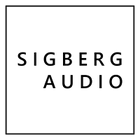Articles
Do you need high end loudspeakers for rock and heavy metal?
How to optimize your subwoofers for music and get tight, balanced bass in a few easy steps!
Designing a cardioid loudspeaker: The Manta
A loudspeaker that can play everything!
How Velvet Recording fixed the most common sound problems in studio control rooms
We recently sat down with Christer Krogh, mixing & mastering engineer and producer at Velvet recording. We had a chat on the topic of the Sigberg Audio Manta wideband cardioid monitors, and how they have changed and improved the way he works.
Velvet recording has a a setup of Sigberg Audio Manta Wideband cardioid monitors with dual Sigberg Audio 10D subwoofers in their recording studio, as well as Sigberg Audio SBS.1 with dual Sigberg Audio Inkognito 10 subwoofers in their mixing&mastering studio.









